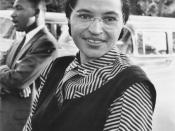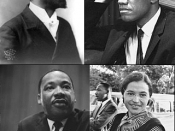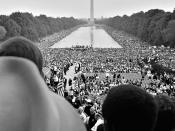The media is arguably the most influential tool for creating, influencing and reflecting public opinion and consciousness. It has the ability to shape societal views and norms. In fact, since the advent of the media's existence it has widely been used to accomplish this very task. That the media can serve this purpose is especially evident if we examine the way it was used during the American civil rights movement. This movement took place between 1954 and 1965. During this revolutionary period, African-Americans vehemently fought for their equality and freedom. This struggle for civil rights is especially distinct as it sought to integrate blacks and whites in a racially segregated United States. This challenge was taken on by both radical and more peaceful civil rights activists. These two groups, for the most part, shared similar intentions for black equality, yet communicated their message for racial acceptance and equality in very different ways.
Their distinct forms of protest and combat had equally distinct implications. The non-violent civil rights movement fought for racial acceptance and equality using exclusively peaceful and non-violent methods. Their notion of non-violence was embraced in an attempt to invalidate the negative stereotypes and the barbaric image that the white American public held of African Americans. The methods used by this non-violent movement, led by Martin Luther King Jr., consisted of protests such as sit-ins, boycotts, freedom rides, political marches and other forms of non-violent protest. It was hoped that by adopting such a strategy, African Americans would come to be seen as the unprovoked victims of white brutality.
On the other side of the spectrum was the radical movement which communicated their slightly different views about racial equality in an entirely different way. This movement endorsed a more radical form of resistance. It consisted of violent acts...


